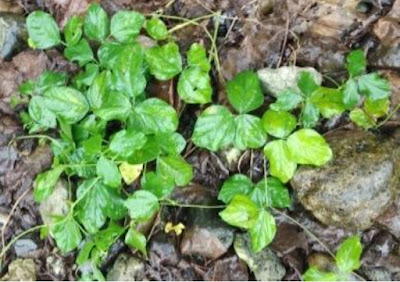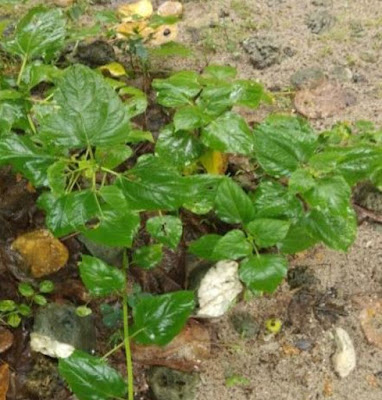An open access Environmental Sciences Research Journal called, Journal of Biodiversity and Environmental Sciences (JBES) recently published an article entitled "Identification and pharmacological properties of coastal plants from Barangay Diguisit, Baler, Aurora". The Authors of this articles are, Zedrick A. Ventura, from Department of Biological Sciences, College of Science, Central Luzon State University, Science City of Muñoz, Nueva Ecija, Philippines. Diana C. Castillo, from Faculty Department of Biological Sciences, College of Science, Central Luzon State University, Science City of Muñoz, Nueva Ecija, Philippines. And Evaristo A. Abella, from Biodiversity Conservation Laboratory, Interactive Laboratory, Department of Biological Sciences, College of Science, Central Luzon State University, Science City of Muñoz, Nueva Ecija, Philippines.
Abstract
This study was conducted to screen the pharmacological properties of the different coastal plants located along coastal areas of Diguisit, Baler, Aurora. Six coastal plants were collected and were identified as Dracaena fragrans, Pueraria montana var. lobata, Sphagneticola trilobata, Urticaceae, Nephrolepis cordifolia, and Pandanaceae. Ethanol extracts of plants were evaluated for antibacterial properties against S. aureus and E. coli using disc diffusion method. Positive results were revealed in S. aureus both in 24 and 48 hours as zones of inhibitions were manifested. S. trilobata and P. montana var. lobata has the largest zone of inhibition. On the other hand, only the P. montana var. lobata, S. trilobata, and Urticaceae showed positive result against E.coli at 24 hours. At the 48th hour of incubation, a decrease in zones of inhibition was observed. Antioxidant activity assay was evaluated in 2,2-diphenyl-1-picrylhydrazyl (DPPH), trolox equivalent. All of the coastal plants collected showed antioxidant activity; Pandanaceae and S. trilobata were recorded with the highest antioxidant activity. The results in test for antibacterial properties and antioxidant activities suggested that the coastal plants collected had the potential for pharmacological properties.
Fig. of this research paper
 |
| Fig. 1. Collection sites of the coastal plants; (A) Collection site 1, (B) Collection site 2, (C) Collection site 3, (D) Collection site 4, and (E) Collection site 5. |
 |
| Fig. 2. Pueraria montana var. lobate |
 |
| Fig. 3. Sphagneticola trilobata |
 |
| Fig. 4. Urticaceae Family. |
 |
| Fig. 5. Nephrolepis cordifolia. |
 |
| Fig. 8. Pandanaceae Family. |
Introduction
Higher plants have been described as chemical factories that are capable of synthesizing unlimited number of highly complex and unusual chemical substances. The World Health Organization (2004)estimated that 80% of the people in developing countries of the world rely on traditional medicine for their primary health care needs, and about 85% of traditional medicine involves the use of plant extracts. This means that about 3.5 to 4 billion people in the world rely on plants as sources of drugs. Pharmacology, by definition, is the branch of biology concerned with the study of drug action which exerts a biochemical or physiological effect on the cell, tissue, organ, or organism (Vallance & Smart,2006). If substances have medicinal properties, they are considered pharmaceuticals (Finkel et al., 2009)leaf parts of the plants were collected by handpicking before assaying. The leaves were rinsed with water and placed in a clean, separate, and sealed plastic bags until extraction process. For the samples needed for authentication, vegetative and reproductive part of the plants were collected and instantly washed with ethyl alcohol before placing in clean plastic bags. Plant Extraction Plant samples were cut into small pieces for air-drying and were powdered. Ethanol extraction and concentration using rotary evaporation was done in the Rice Chemistry and Food Science Division, Philippine Rice Research Institute, Nueva Ecija. The extracts obtained were stored in a refrigerator until use. The Philippines is high in terms of plant diversity that an estimated 30-40% of these plants is endemic to the country and found nowhere else in the world(Amoroso, 2012). The municipality of Baler in Auroras present with coastal areas. Beaches in Baler, Aurora were abundantly rearing with different coastal plants growing along the shore and rock formations. The Philippine Government RA No. 8423 or the “Traditional and Alternative Medicine Act (TAMA) of1997” was declared and stated to improve the quality and delivery of health care services to the Filipino people. One of the objectives is to promote and advocate the use of traditional, alternative, preventive and curative health care modalities that have been proven safe, effective, cost effective and consistent with government standards on medical practice. This study of the different coastal plants located along the beaches of Barangay Diguisit, Baler, Aurora was evaluated for its pharmacological properties through antibacterial properties and antioxidant analysis. Get the full articles by following the link J. Bio. Env. Sci. 18(6), 18-28, June 2021.
Reference
Amoroso VB. 2012. Plant Diversity in Two Philippine Long-Term Ecological Research Sites. The Biodiversity Observation Network in the Asia-Pacific Region. Ecological Research Monographs 39-51.
Andriani Y, Mohamad H. 2015. Phytochemical Analysis, Antioxidant, Antibacterial and Cytotoxicity Properties of Keys and Cores Part of Pandanus tectorius fruits. Arabian Journal of Chemistry 11, 3.
Baza Mendonça L, dos Anjos L. 2005. Beija-flores (Aves, Trochilidae) e seus recursos florais em uma área urbana do Sul do Brasil. Revista Brasileira de Zoologia 22(1), 51-59.
Bhargava KK, Seshadri TR. 1974. Chemistry of Medicinal Plants: Eeliota alba and Wedelia calendulacea. Journal of Research of Indian Medicine 9(1), 9-15.
Chahardehi AM, Ibrahim D, Sulaiman SF. 2009. Antioxidant Activity and Total Phenolic Content of Some Medicinal Plants in Urticaceae Family. Journal of Applied Biological Sciences, 2(3), 01-05.
Cherdshewasart W, Subtang S, Dahlan W. 2007. Major Isoflavonoid Contents of the Phytoestrogen Rich-herb Pueraria mirifica in comparison with Pueraria lobata. Journal in Pharmacological Biomedicine 43, 428-434.
Chinaka ON, Julius OO, Florence CN, Stella AM. 2013. Anticoagulant and Antioxidant Activities of Dracaena arborea Leaves (Wild.). American Journal of Biomedical Research 23(7), 86-92.
Chomicki G, Renner SS. 2015. Phylogenetics and Molecular Clocks Reveal the Repeated Evolution of Ant-plants after the Late Miocene in Africa and the Early Miocene in Australasia and the Neotropics. New Phytologist 207(2), 411-424.
Christenhusz MM, Chase MW. 2014. Trends and Concepts in Fern Classification. Annals of Botany 113(4), 571-594.
Chung YC, Chen CY. 2008. Antibacterial Characteristics and Activity of Acid Soluble Chitosan. Bioresource Technology 99(8), 2806-2814.
Finkel R, Cubeddu L, Clark M. 2009. Lippencott’s Illustrated Reviews: Pharmacology 4th Edition. Lippencott Williams & Wilkins 1-4.
Forseth Jr, IN, Innis AF. 2004. Kudzu (Pueraria montana): History, Physiology, and Ecology Combine to Make a Major Ecosystem Threat. Critical Reviews in Plant Sciences 23, 401-413.
Gunasekara AS, dela Cruz IDP, Curtis MJ, Claasen VP, Tjeerdema RS. 2009. The Behavior of Clomazone in the Soil Environment. California Rice Research Board 65(6), 1733.
Hanasaki Y, Ogawa S, Fukui S. 1994. The Correlation between Active Oxygens Scavenging and Antioxidative Effects of Flavonoids. Free Radical Biology and Medicine 6, 845-850.
Huxley A. 1992. New RHS Dictionary of Gardening, Macmillan 2, 96.
Jewett DK, Jiang CJ, Britton KO, Sun JJ, Tang J. 2003, Characterizing Specimens of Kudzu and Related Taxa with RAPD’s. Castanea 68(3), 254-260.
Korpe PS, Petri WA. 2013. Environmental Enterophy: Critical Implications of a Poorly Understood Condition. Trends in Molecular Medicine 18(6), 328-336.
Kostova I. 2011. Coumarins as Antioxidants. Current Medicinal Chemistry 18(25), 3929-3951.
Maldini M, Sosa S, Montoro P. 2009. Screening of the Topical Anti-inflammatory Activity of the Bark of Acacia cornigera Willdenow, Byrsonima crassifolia Kunth, Sweetia panamensis Yakovlev and the leaves of Sphagneticola trilobata Hitchcock. Journal of Ethnopharmacology 122(3), 430-433.
Narender B, Naveena N, Pravalika P, Kaleem S, Vamshi M, Mandhadi JR. 2017. Pharmacological Evaluation of Root and Leaf Extracts of Dracaena reflexa var. angustifolia. Innovative Pharmacology 5(3),141-146.
Pitzschke A, Forzani C, Hirt H. 2006. Reactive Oxygen Species Signalling in Plants. Antioxidant and Redox Signalling 8, 1757-1764.
Smith AR, Pryer KM, Schuettpelz E, Korall P, Schneider H, Wolf PG. 2006. A Classification for Extant Ferns. Taxonomy 55(3), 705-731.
Subramonium A, Pushpangadan P. 1999. Development of Phytomedicines for Liver Diseases. Indian Journal in Pharmacology 31, 166-175.
Sultana. 2008. Cytotoxicity, Antimicrobial and Antioxidant Studies of the Different Plant Parts of Mimosa pudica. Stamford Journal of Pharmaceutical Sciences 1(1), 80-84.
Upreti RP, Gyawali R. 2015. Antimicrobial Activity and Phytochemical Screening of Some Traditionally Used Nepalese Medicinal Plants. International Journal of Pharmaceutical & Biological Archives 6(1), 20-25.
Vallance P, Smart TG. 2006. The Future of Pharmacology. British Journal of Pharmacology 147(1), 4-7.
WHO. 2004. WHO Guidelines on Safety Monitoring of Herbal Medicines in Pharmacovigilance Systems. Geneva, Switzerland: World Health Organization
Call for Paper | INNSPUB Jo... by International Network For N...
















